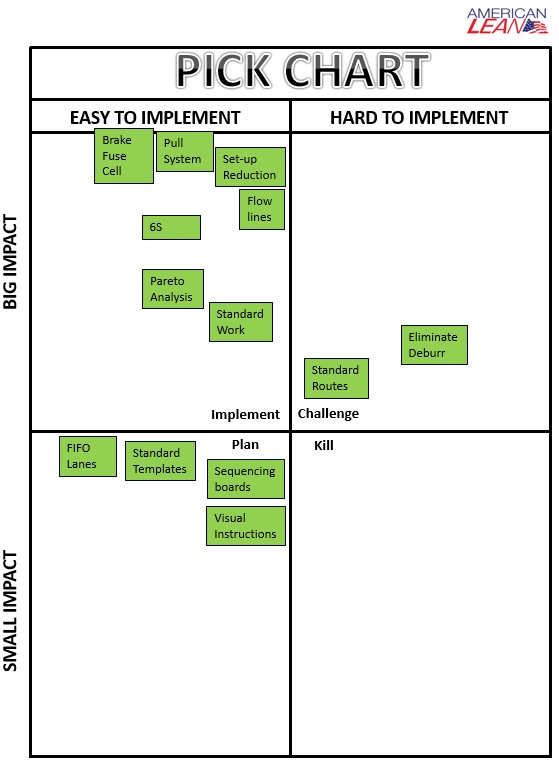Since it’s near the end of the year and your company might consider Lean training, I thought I’d give you an early present and cover what to include in your Lean training. This is not an exhaustive list- I’m breaking the topics up over several weeks.
If you cover these topics, I know you will have a very solid start in educating employees on Lean topics that will benefit your company immensely! It’s helpful to add workshops for many of these topics to keep people excited and engaged when we can all get into a training room again!

1. Current State Value Stream Mapping
From an implementation perspective, value stream mapping should be one of the first activities you conduct. The purpose of a value stream map is to visually show where the waste is within your processes.
Value stream maps are icon-based and introducing students to the icons should be covered. There are different icons for the current state and future state maps. Cover process boxes, collecting information for the process boxes, putting process boxes in the correct order, and then adding more detail by adding additional icons.
Share what triangles mean in a value stream map- inventory or time and how to collect that information. Talk about taking the value stream map and walking it backward to catch any steps you might have missed.
Finally, share how to draw a timeline across the bottom of the value stream map to show the relationship between value-added and non-value-added work and the % of value-added work.
2. Future State Value Stream Mapping
Once you identify where the waste is within your processes in your current state value stream map, it’s important to develop a future state value stream map. A future state value stream map uses different icons- icons that represent pull systems, FIFO lanes, supermarkets, and level loading.
The purpose of a future state map is to provide a road map for your improvement activities. Depending upon your organization, it may take several years to approach the future state that your map depicts.
Place the map in your Project Management Office (PMO) and continually work toward it.
3. Conducting a Waste Walk
Conducting a waste walk happens after you develop your current state value stream map. As you walk your map backward, take notes on the waste you see in the different processes. Have the team members take notepads with them and have them identify wastes that fall into the eight waste categories.
After walking your vsm backward and taking notes, teach the team to put the wastes they identified on your DOWNTIME chart. Remember, the eight wastes can form the word DOWNTIME. Have them take their best guess which category the waste falls under.
4. PICK Chart (Impact/Effort Matrix)
Now it’s time to educate your team on brainstorming ideas to eliminate waste. It’s great to identify and classify the waste, it’s more important to eliminate it. Have the team brainstorm ideas for eliminating the wastes on the DOWNTIME chart.
Take those ideas and place them on an impact/effort matrix. Teach the team to focus on the ideas that end up in the Implement quadrant. The easy to do/large impact quadrant. The ideas from this quadrant, based upon the identified wastes within your value stream map, form the basis of kaizen events moving forward.
Schedule the kaizen events one quarter at a time and conduct them. This will help you head toward your future state design.
Next week I will cover more on what to include in your Lean training.
As always, it is an honor to serve you, and I hope that you and your company are getting better every day!
Follow me on Twitter
Join me on LinkedIn
Listen to the podcast here
